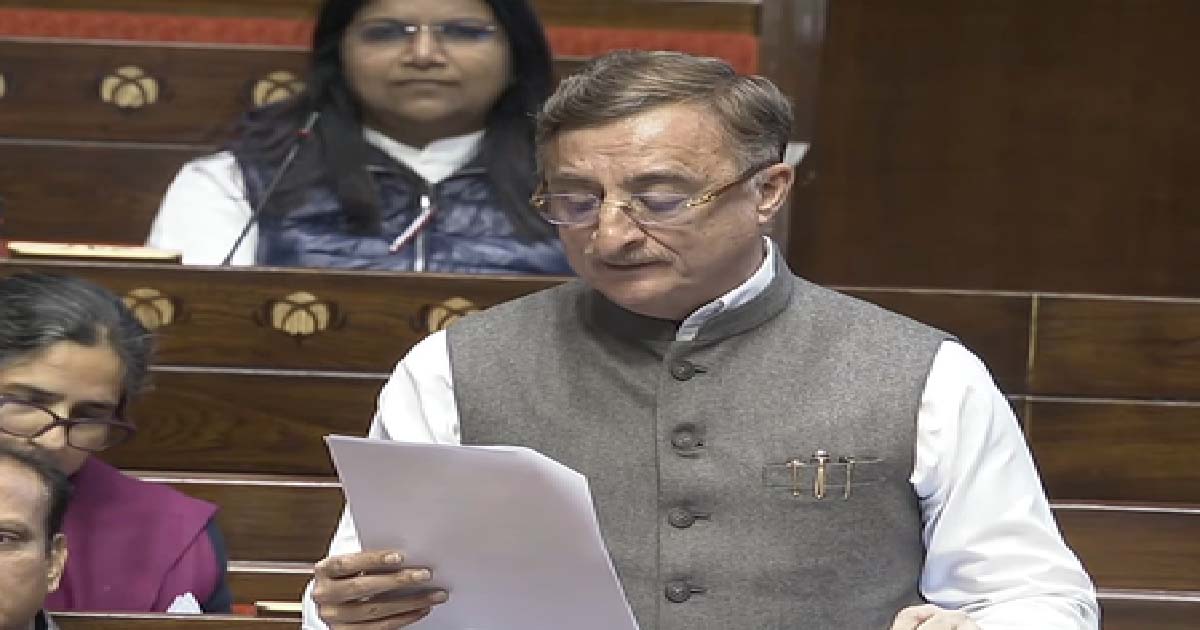Business
Union Budget 2025-26: 10,000 additional seats in medical colleges, daycare cancer centres

New Delhi, Feb 1: Union Finance Minister Nirmala Sitharaman on Saturday announced 10,000 additional seats in medical colleges as well as daycare cancer centres in all district hospitals.
Presenting her eighth consecutive budget and the NDA government’s second full Union Budget of its third term, the Finance Minister said that India has seen remarkable growth in medical education in the last 10 years.
“10,000 additional seats to be added in medical colleges next year and 75,000 seats to be added in next five years,” she said.
“All district hospitals to have daycare cancer centres. About 200 daycare cancer centres will be established in 2025-26,” the FM said.
Further, “broadband connectivity to primary health centres will help in expanding telemedicine consultation for rural patients at village level”, she added.
In the last 10 years, medical colleges in the country have doubled to 780 in 2024-25 from just 387 in 2013-14 — a 102 per cent growth.
During the same period, the seats for MBBS also rose from 51,348 to 1,18,137 — a 130 per cent surge.
In the last budget, the government made custom duty exemptions and a reduction in GST rates on three anti-cancer medications.
The three anti-cancer drugs were Trastuzumab, Osimertinib and Durvalumab.
The government also slashed the GST rate from 12 per cent to 5 per cent on these three cancer medicines.
Cancer cases are rising significantly in India. According to a Lancet study, India registered about 12 lakh new cancer cases and 9.3 lakh deaths in 2019 — the second-highest contributor to the disease burden in Asia.
The number climbed to 13.9 lakh in 2020, which further soared to 14.2 lakh and 14.6 lakh in the years 2021 and 2022, respectively, the study showed.
Business
Cong flags sharp rupee decline in Rajya Sabha, warns of widespread economic strain

New Delhi, Dec 4: During Zero Hour in the Rajya Sabha on Thursday, Congress MP from Madhya Pradesh Vivek Tankha voiced deep concern over what he described as the “freefall of the Indian rupee” and the widening economic distress affecting ordinary citizens across the country.
Calling the issue “extremely topical and urgent”, Tankha said the currency’s sharp decline was inflicting widespread financial strain on households, businesses and key sectors of the economy.
Tankha noted that the rupee had crashed past Rs 90 per US dollar — touching between 90.14 and 90.19 — marking the weakest level in India’s history. Over the past five years, he said, the rupee has lost between 20 per cent and 27 per cent of its value, effectively reducing the purchasing power of people’s income by nearly one fourth. In global terms, the rupee has fallen 5 per cent this year alone, its steepest drop since 2022, making it one of Asia’s worst-performing currencies in 2025.
He further highlighted that India recently recorded a monthly trade deficit exceeding USD 40 billion, underscoring how sharply imports outweigh exports. At the same time, foreign investors have withdrawn more than USD 17 billion from Indian markets this year — the largest outflow in several years — drying up capital and weakening investor sentiment.
“FDI flows are stagnant, external borrowings have slowed, and the world is becoming increasingly wary of India’s external stability,” Tankha warned.
Emphasising the direct impact on citizens, he said that every bout of rupee depreciation makes imports costlier, and India relies heavily on imported fuel, cooking gas, electronic machinery and medicines. A 5 per cent fall in the rupee, he explained, pushes inflation up by 30-35 basis points.
“Every household ends up paying more. Food prices rise, transport costs increase, and a chain reaction follows that hits the poor the hardest,” he said.
The middle class, he added, is also feeling the squeeze as the prices of smartphones, laptops, medical equipment, school supplies, clothing and household appliances rise due to India’s dependence on imported components.
“For the common person, a falling rupee feels like a salary cut without the employer informing you. Your money buys less every day,” he remarked.
Tankha also drew attention to the pressure on Micro, Small and Medium Enterprises (MSMEs), many of which rely on imported raw materials. These businesses are facing a 20-30 per cent rise in input costs, shrinking already thin margins.
Machinery imports have become more expensive, slowing expansion and putting jobs at risk. Exporters, he said, are not gaining from the weaker rupee because major export sectors — such as textiles, chemicals and engineering goods — depend heavily on imported intermediaries.
“Small manufacturers are caught in a double blow: higher costs and weaker demand,” he said.
Companies with foreign currency loans are also struggling, with repayment costs rising by 15-20 per cent due to the rupee’s depreciation, weakening corporate balance sheets and threatening financial stability.
A falling rupee, Tankha added, discourages overseas investors, creating a “vicious cycle” where declining confidence further accelerates currency pressure. “As the rupee falls, investors pull out, and markets shift,” he cautioned.
Tankha urged the government to recognise the seriousness of the situation and take urgent corrective measures to stabilise the currency and safeguard vulnerable sectors of the economy.
Business
Sensex, Nifty open lower amid weak global cues

Mumbai, Dec 4: Indian stock markets opened weak on Thursday as pressure from a falling rupee and continued foreign investor selling kept sentiment muted on Dalal Street.
The opening also coincided with the weekly F&O expiry for the Sensex, adding to the cautious mood among traders.
The rupee hit a fresh record low of 90.56 against the US dollar in early trade, worsening concerns about capital outflows.
The sustained depreciation has been fuelled by steady foreign investor selling, firm demand for the dollar, and lingering uncertainty surrounding India’s trade negotiations with the US.
Against this backdrop, the benchmark Sensex began the day at 84,958, down 148 points or 0.17 per cent. The Nifty opened at 25,953, slipping 33 points or 0.13 per cent.
Most heavyweight stocks on the Sensex traded lower in the morning session. HUL, Titan, Eternal, ICICI Bank, Power Grid, Trent, Ultratech Cement, Bajaj Finserv, Tata Motors PV, NTPC, Bajaj Finance, and HDFC Bank were among the major laggards.
Only a handful of large-cap counters managed to stay in the green. IT majors TCS, HCL Tech, Infosys, and Tech Mahindra led the gainers’ list, supported by a stronger dollar. Asian Paints and Bharti Airtel also opened with mild gains.
In the broader market, sentiment was mixed. The Nifty MidCap index edged up 0.17 per cent, showing some resilience, while the Nifty SmallCap index slipped 0.07 per cent.
Market participants said the recent pressure on equities is closely linked to the rupee’s sharp fall. After breaching the 90-per-dollar mark on Wednesday, the currency’s slide has become a key worry for investors, raising concerns over imported inflation and higher costs for companies dependent on overseas supplies.
With global cues still uncertain and the domestic currency under strain, traders expect markets to remain volatile through the day, according to experts.
Business
India-AI Impact Summit 2026 to generate actionable recommendations: Minister

New Delhi, Dec 3: Reflecting India’s growing role in global AI discussions, the country will host the India-AI Impact Summit 2026 here from February 16–20, the government said on Wednesday.
For the first time, the global AI summit series will take place in the Global South and the shift signals a broader move toward a more inclusive global AI dialogue, said Union Minister of State for Electronics and IT, Jitin Prasada, in Lok Sabha.
“In line with Prime Minister Narendra Modi’s vision, the government is democratising the development and usage of technology. The focus is using Artificial Intelligence (AI) for solving real-world problems and ultimately improving lives across various sectors,” said the minister.
In this regard, the government has taken an inclusive and innovation-friendly approach to AI governance. India’s AI strategy has been formed after studying legal frameworks around the world and extensive consultation with stakeholders. A key pillar of India’s AI strategy is its balanced and pragmatic techno-legal approach to regulation.
The summit reflects India’s growing role in global AI discussions. It follows the UK AI Safety Summit, AI Seoul Summit, Paris AI Action Summit (which India co-chaired), and the Global AI Summit on Africa.
This demonstrates that the Summit is situated within a broader global discourse and seeks to contribute to harmonised international cooperation on responsible AI development, said the minister.
The thematic priorities of the Summit, referred to as the seven ‘Chakras’, underline its key objectives. These include Human Capital, Inclusion, Safe and Trusted AI, Resilience, Innovation and Efficiency, Democratizing AI Resources, and AI for Economic Development and Social Good.
These thematic areas encompass issues such as AI safety, data governance, transparency, human-centred development and accountability frameworks. These discussions are aligned to drive the strategic direction of the Summit’s events and deliberations.
The Summit is intended to generate actionable recommendations that contribute to long-term AI governance objectives rather than framing immediate binding regulations.
-

 Crime3 years ago
Crime3 years agoClass 10 student jumps to death in Jaipur
-

 Maharashtra1 year ago
Maharashtra1 year agoMumbai Local Train Update: Central Railway’s New Timetable Comes Into Effect; Check Full List Of Revised Timings & Stations
-

 Maharashtra1 year ago
Maharashtra1 year agoMumbai To Go Toll-Free Tonight! Maharashtra Govt Announces Complete Toll Waiver For Light Motor Vehicles At All 5 Entry Points Of City
-

 Maharashtra1 year ago
Maharashtra1 year agoFalse photo of Imtiaz Jaleel’s rally, exposing the fooling conspiracy
-

 National News1 year ago
National News1 year agoMinistry of Railways rolls out Special Drive 4.0 with focus on digitisation, cleanliness, inclusiveness and grievance redressal
-

 Maharashtra1 year ago
Maharashtra1 year agoMaharashtra Elections 2024: Mumbai Metro & BEST Services Extended Till Midnight On Voting Day
-

 National News1 year ago
National News1 year agoJ&K: 4 Jawans Killed, 28 Injured After Bus Carrying BSF Personnel For Poll Duty Falls Into Gorge In Budgam; Terrifying Visuals Surface
-

 Crime1 year ago
Crime1 year agoBaba Siddique Murder: Mumbai Police Unable To Get Lawrence Bishnoi Custody Due To Home Ministry Order, Says Report












